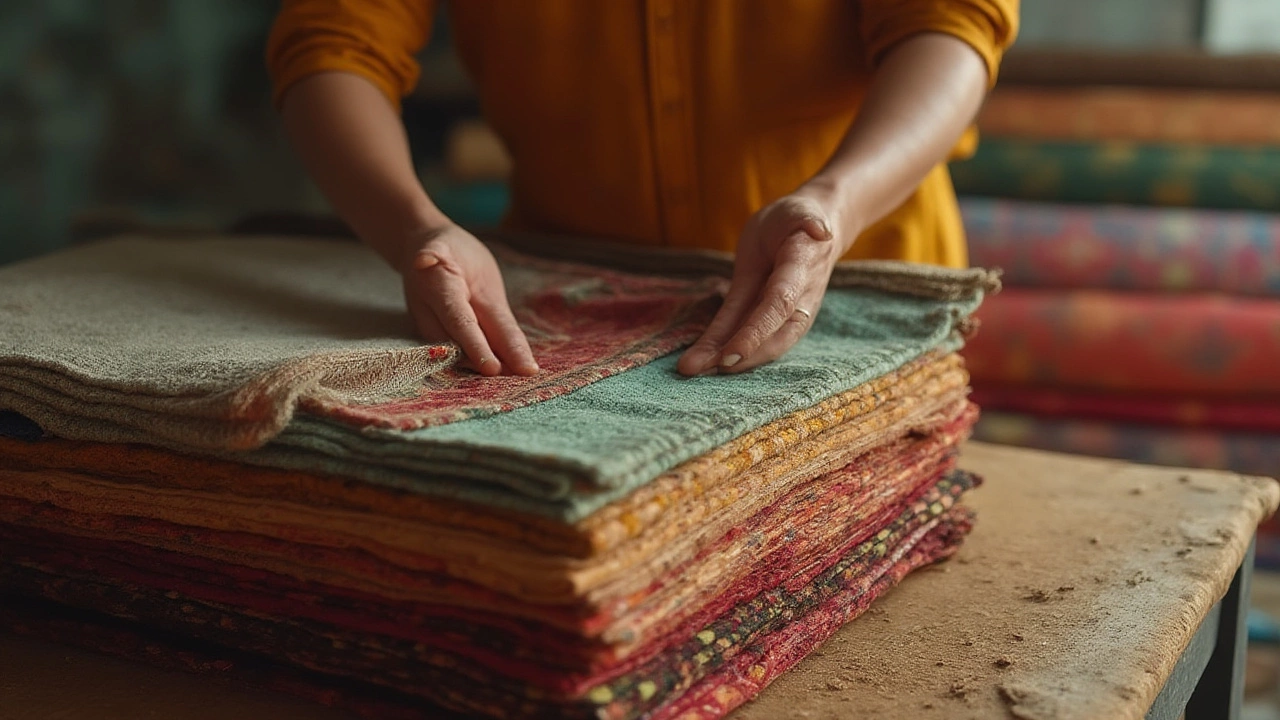How to Spot a High-Quality Sofa: Expert Tips for Buyers

Ever sink into a sofa at a friend’s place and never want to leave? Meanwhile, your own couch at home feels like someone swapped out the cushions for cardboard. Not all sofas are built the same, and it’s easy to get tricked by a pretty face—especially if you don’t know exactly what signs scream “built to last” and which are just style over substance. My kids, Jax and Eliana, have done their fair share of bouncy-castle testing on our living room staple, so believe me, I know what holds up and what doesn’t. If you want to pick a sofa that won’t leave your back sore or your wallet empty in two years, there are certain signs you have to look for beyond just the fabric or color.
Understanding the Foundation: The Frame and Suspension
The most important thing about a high-quality sofa isn’t what you first see—it’s hidden under the upholstery. If you could peek inside, you’d see the backbone of the whole thing: the frame. Top-notch sofas almost always use kiln-dried hardwood for their frames. This isn’t just marketing hype. Wood that’s been kiln-dried (think oak, beech, or maple) resists warping and cracking, even in the weirdest seasons or if you spill your coffee one too many times. Engineered woods or plywood can work, but they don’t last like solid hardwood—it’s a lot like the difference between hardwood floors and laminate.
Then there’s how the pieces of wood are joined. High quality means methods like mortise-and-tenon or double dowel joints, reinforced with glue and screws—never just staples or nails. Flip up a sofa in a cheap furniture shop, and you might be horrified by what’s hiding underneath. Pro tip: if you can ask (or check the tag), try to get details on how the frame is made. Some brands, especially in 2025, have gotten good at sneaking all-foam or plastic frames into sofas that cost a small fortune.
Next, let’s talk about suspension. The gold standard for durability and comfort is eight-way hand-tied springs. Yes, that’s a real thing in 2025, and skilled craftspeople literally tie springs together eight ways by hand. This ensures even support—no weird dips where you always sit. If you don’t want to pay for hand-tied, a serpentine (S-shaped) spring system done right can still be amazing, but watch out: on cheap sofas, these can sag or even poke through. If you want numbers, a survey from the National Furniture Association found that 71% of sofas with proper hardwood frames and hand-tied springs stay comfortable after ten years, while only 32% with just basic suspensions last that long.
Test the sofa by lifting a corner. If it feels strangely light, that’s a red flag—a well-constructed sofa will have some weight because of all that solid wood. And don’t be shy: ask if you can remove the cushions, poke around, see if anything wiggles or creaks. If the store staff hesitates, it probably means they don’t want you to see the truth.

Materials Matter: Fabrics, Fillings, and Finishes
Now—fabrics. There are so many choices in 2025, but not all will withstand the daily Olympics your living room sees. High-performance polyester blends, tough cottons, and linens are popular for a reason: they don’t pill, fade, or start looking tired by Christmas. If you want true luxury, leather’s always a classic, but only if it’s full-grain or top-grain—anything labeled ‘genuine leather’ isn’t the real deal. Synthetic leathers look good a year or two before peeling betrays them, especially in sunny rooms.
A surprising fact is that the Martindale rub test is still the go-to measure of fabric strength in 2025. A sofa fabric rated for 25,000+ Martindale cycles will generally outlast more delicate weaves. Some labels include this now, so check for it. If you have dogs, kids, or your couch doubles as a trampoline (like mine), seek out stain-resistant treatments or removable, machine-washable covers. Avoid delicate silks or velvets unless you don't mind babying your furniture.
As for fillings, those heavenly-soft feather cushions feel amazing, but they need regular fluffing—unless you’re into the lumpy look. High-density foam or wrapped-coil cushions strike the best balance between softness and shape. Ideally, look for a core of high-resilience foam, wrapped in feather, down, or polyester batting. Avoid sofas filled only with low-density foam. Europe set a rough standard: cushions with a density of 1.8 to 2.5 lbs/cu ft last years longer than those with lower-grade foam.
Stitch quality might not seem like a big deal, but it matters. Look for straight seams, reinforced corners, and double-stitching in high-stress spots. If the thread looks thin or uneven, expect splits within months. Zippers on cushions should glide smoothly and feel sturdy—cheap plastic or twisted zippers will turn into a nightmare over time.
| Feature | High Quality | Low Quality |
|---|---|---|
| Frame | Kiln-dried Hardwood | Particleboard, Softwoods |
| Joints | Mortise & Tenon, Dowels, Screws | Staples, Glue only |
| Suspension | Eight-way, Sinuous Springs | Webbing, Poorly made sinuous |
| Fabrics | High-rub Count, Leather, Twill | Thin Polyester blends, Faux leather |
| Cushion Filling | High-density foam, Feathers | Low-density foam |
One more thing: feet and visible legs should ideally be part of the frame, not just screwed on. Sometimes, removable legs work fine for moving through doors, but if you notice loose screws right from the start, be wary. Cheap plastic or hollow metal won’t last if your sofa gets regular use.

Practical Tests and Buyer’s Checklist: Making Sure It’s Worth the Money
So, you’ve done the research, peered under the cushions, and run your fingers over the seams—but do you trust your gut before dropping serious cash? It’s time to put your potential new high-quality sofa to the real-life test. If you’re shopping in-store, sit down and stay for a while. Notice how the sofa supports your back and thighs—the seat shouldn’t sag or slope, and you shouldn’t feel the frame or springs poking you. If you slide off or sink too much, pass on it. Jax once pointed out how on some sofas, his feet dangle weirdly or his knees end up near his chin; that’s a sign the seat depth isn’t right for the user, which ends up being pretty uncomfortable long-term.
Ask the salesperson exactly what’s inside. “Solid hardwood frame?” If they don’t know, that’s a red flag. Any reputable brand should provide material details. It’s common for high-end stores to pop open a sample cushion to show you the guts. Look for tags mentioning specific foam density or details about the spring system. If you’re buying online, dig into reviews and look for photos from real buyers weeks or months after delivery—these often reveal comfort and durability issues not visible at first.
- Weight: A robust sofa will feel noticeably heavy for its size, thanks to solid wood and quality springs.
- Cushion Test: Cushions should spring back quickly after you stand up. If any part stays flattened, that’s a hint lower quality fillings are used.
- Evenness: Look across the seat—are there lumps or dips? Consistent appearance is another mark of a well-made piece.
- Product Warranties: Check if the manufacturer offers a warranty on the frame (some run ten years or more), or just a basic one-year cover.
Check the return policy. Even the best research can’t replace living with the sofa for a week or two, so go for brands with a solid money-back trial—and check the fine print. Eliana once spilled orange juice on day two; being able to easily pop off the covers and toss them in the wash literally saved our sofa’s life.
If you’re sensitive to chemicals or have allergies, double-check whether flame retardants, formaldehyde, or heavy-duty finishes were used. Many manufacturers list if their sofas are GREENGUARD or CertiPUR-US certified in 2025—worth it if you care about indoor air quality.
Don’t be fooled by a brand’s reputation alone. Even once-classic sofa makers have cut corners in recent years to save costs. If the sofa uses any terms like “blended wood,” “genuine leather,” or “bonded leather,” assume it’s made to hit a price point, not to last through years of Netflix marathons, sleepovers, and popcorn fights.
And for the families out there—if your life includes kids, pets, or friends who forget to take off their muddy sneakers, a high-quality sofa will pay off. Look for stain-resistant fabrics, removable covers, and warranty policies that actually cover more than a single scratch. Spend a little more now for real construction, and in five years, you’ll have a sofa that still feels like home, not one you secretly hope someone else will take off your hands.